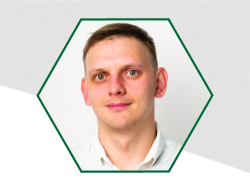Femtosecond lasers have transformed transparent materials processing, particularly in the semiconductor industry. In this dynamic field, there is a pressing need for diverse solutions, especially concerning the manufacturing of high aspect ratio micro-vias and structures essential for semiconductor packaging.
Through-Glass-Via (TGV) technology stands at the forefront of this manufacturing and packaging revolution, facilitating electrical interconnections through glass substrates. Unlike traditional methods, the straightforward glass-based process eliminates the necessity of depositing insulating layers on TGV walls, resulting in significantly lower manufacturing costs compared to silicon substrates, potentially increasing chip area in a single package by up to 50 percent. Despite these advancements, current techniques are constrained by processing speeds of mere tens of micrometers per second.
Our research addresses these limitations by using long GHz laser pulse packages to refine high aspect ratio hole formation. By investigating physical parameters and focusing conditions, we've identified the crucial role of numerical aperture in determining hole depth. We have demonstrated that effective drilling is achieved under conditions of slight heat accumulation, while variations in repetition rate impact both hole depth and channel quality.
However, the diameters and surface morphology of TGV holes created through this method present significant challenges for selective metallization in electronic applications. To overcome this, we propose novel approaches for selectively metallizing chemically etched surfaces using SSAIL technology, all while continuing our fabrication of TGVs. This integrated approach promises to overcome existing limitations and pave the way for even greater advancements in semiconductor packaging and manufacturing.
Keywords
- Burst Pulses
- Femtosecond Pulses
- Selective Metallization
- Tgv
- Transparent Material

